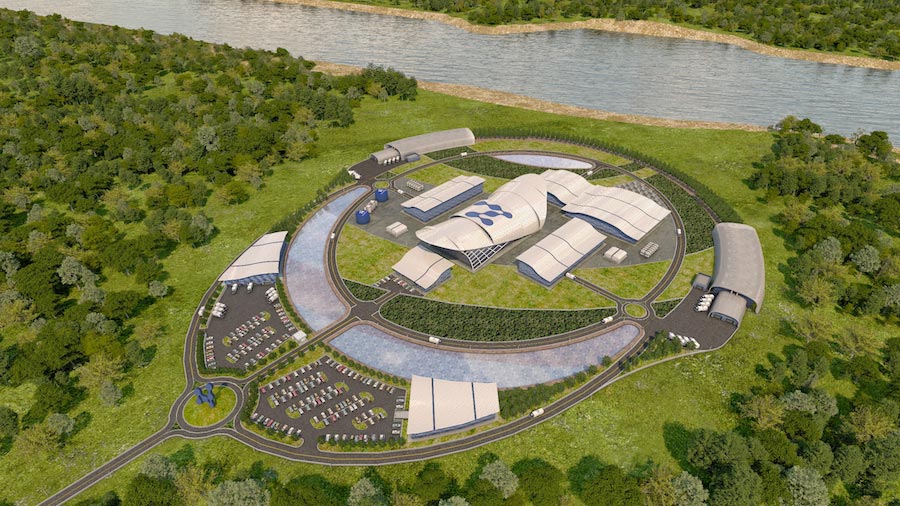
NuScale, the Oregon-based firm that is developing small modular nuclear reactors (SMR), recently announced several new partnerships that could enable it to more efficiently deploy its technology. Power-sector engineering specialist Sargent & Lundy will become an NuScale investor and provide project support, for instance. Also, agreements with Korea’s Doosan Heavy Industries and Construction Co., Ltd.—to invest in NuScale and build some assemblies for its plant—and with Romania and Jordan—to develop small modular reactors in those countries—indicate some market potential for the firm's still-emerging technology.
Last year, the company, which is majority owned by Fluor, also joined in an alliance with BWX Technologies to start the engineering work to manufacture the reactor itself. That announcement came after an 18-month selection process that garnered interest from 83 companies in 10 countries.
The company’s first customer, Utah Associated Municipal Power Systems, is planning a 12-module SMR plant at the Idaho National Laboratories. Each module is capable of generating 60 MW of power.
ENR recently spoke with Jose Reyes, NuScale's chief technology officer, who co-founded the company and co-designed the reactor about the recent developments.
Can you provide an update on the design review from the Nuclear Regulatory Commission?
The review with the NRC continues on schedule. This is great news. Right now we are looking at the NRC completing phase four of the design certification review by December of this year. Phase four completes the technical review of the design. If the NRC continues on schedule they would issue the final safety evaluation report by September of next year. So this is a big milestone for us. After that, all that is required is basically an administrative effort to move it into the code of regulations that would be done by 2021.
When do you expect preliminary site work to begin in Idaho?
Our target is to have that first module operational in 2026 at the Idaho National Laboratory. We are looking at a three-year build for the first-of-a-kind plant, three years from the first pour of nuclear grade concrete. There will be initial development of roads, excavation and things that like up to two years before. [2021]
What will construction entail?
The primary difference [from traditional nuclear plants] is that we will manufacture the reactor vessel and the containment vessel in a factory. We will partner with BWX to begin looking at the design for manufacturing. This is a huge difference because rather than building a large concrete containment dome on site, we've gone to a small factory fabricated containment vessel. So that really expedites the process significantly because what happens is you’ve gone to a parallel process where you're manufacturing your vessels in a factory. And at the same time you're doing all your civil construction on site. As soon as the building is ready to receive modules, you can start installing modules, so that's no longer "construction" at that point. It's really equipment installation. The modules would be shipped by truck, rail or barge and in three pieces and be installed into the pool.
So what will onsite civil construction entail?
What happens is that the construction onsite begins to look like normal civil construction. We’re building a large [cooling] pool. We do have to build that to a seismic category 1. And we’ll build the control room and the balance of plant. We will have two turbine buildings.
With NuScale’s agreements with Canada, Romania and Jordan, is it possible that the first NuScale unit would be built someplace other than the United States?
I think there’s a lot of interest in Canada and we did sign an MOU with Bruce Power. But the Canada regulatory process is a bit different than the U.S. process. But they do talk to each other. Our hope is that Canadian regulators could leverage some information that we’ve already provided to the U.S. regulator. I expect that what will happen is that we will get the U.S. certification first and that will help us with other countries.
So with all of the recent announcements from NuScale, what do you think is the most important news coming out of NuScale over the last year?
It really has been getting through the regulatory process and the fact the NRC is still on schedule. It says a lot about the NRC, but it also says a lot about the fact we’ve got a tremendous team here who’s responding to the questions that the NRC is asking and they are doing it in a timely manner. I think that we’ve worked very hard to get here.



Post a comment to this article
Report Abusive Comment